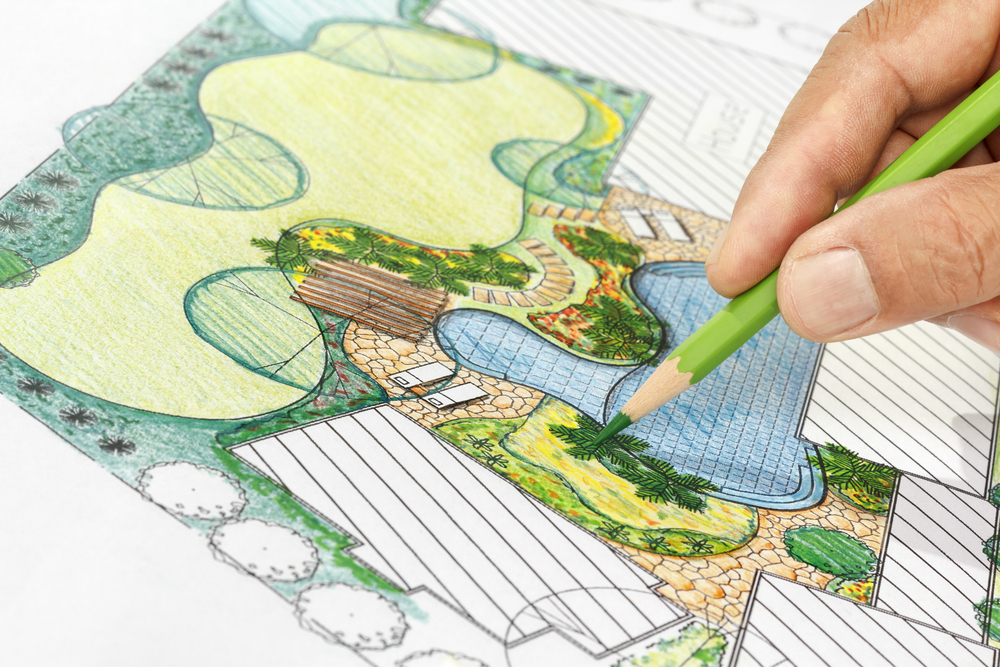Landscaping has long been an art form that combines creativity and horticultural expertise to create beautiful outdoor spaces. However, as technology advances, it is becoming increasingly important to integrate these innovations into our landscaping plans. Doing so enhances our gardens’ aesthetic appeal and improves their functionality and sustainability. This article will explore three ways to integrate technology elements into your landscaping plan, making your outdoor garden space more beautiful, enjoyable, and eco-friendly.
1. Incorporate Smart Irrigation Systems
Efficient water usage is a critical aspect of any landscaping plan, and incorporating technology in this area can help to ensure your garden thrives while minimizing waste. Smart irrigation systems offer several benefits, including:
A. Improved Water Efficiency
Traditional sprinkler systems often overwater plants or waste water through evaporation. By contrast, smart irrigation systems utilize weather data, soil moisture sensors, and advanced algorithms to deliver the precise amount of water your plants need. This not only conserves water but can also lower your water bill.
B. Remote Control and Monitoring
Most smart irrigation systems can be controlled through a smartphone app or web interface. This allows you to monitor your garden’s water usage and make adjustments on the go. For example, if you’re away from home and notice it has rained, you can adjust your irrigation system accordingly to avoid overwatering.
C. Healthier Plants
Smart irrigation systems ensure that plants receive the optimal amount of water, promoting healthier root systems and reducing the risk of diseases related to over or underwatering.
2. Integrate Outdoor Lighting with Smart Controls
Outdoor lighting plays a vital role in landscaping, accentuating features, creating ambiance, and improving safety. Integrating smart technology in your outdoor lighting design can help you create a more versatile and energy-efficient lighting plan. Here’s how:
A. Customizable Lighting Scenes
Smart lighting systems allow you to create custom lighting scenes that can be changed with the tap of a button. For example, you can create a soft, romantic mood for a dinner party or switch to a bright, vibrant setting for a family gathering.
B. Energy Efficiency
LED lights, often used in smart lighting systems, consume significantly less energy than traditional incandescent bulbs. In addition, smart lighting systems can be programmed to automatically turn off during daylight hours or when no one is in the area, reducing energy consumption even further.
C. Enhanced Security
Smart lighting systems can be integrated with home security systems, allowing you to control and monitor your outdoor lighting remotely. For example, you can set your lights to turn on and off randomly while you’re away from home, giving the impression that someone is there and deterring potential intruders.
3. Utilize Solar-Powered Features
Solar power is a clean, renewable energy source that can be integrated into your landscaping plan in various ways, including:
A. Solar-Powered Water Features
Solar-powered fountains, waterfalls, and pond aerators can add a sense of tranquillity and beauty to your garden while reducing your dependence on traditional electricity sources.
B. Solar Landscape Lighting
Solar-powered landscape lighting is an eco-friendly and cost-effective way to illuminate your garden. These lights charge during the day and automatically turn on at dusk, providing a low-maintenance and energy-efficient lighting solution.
C. Solar-Powered Garden Accessories
From decorative solar-powered garden stakes to solar-powered bird baths, many garden accessories now come with built-in solar panels. These features add charm and functionality to your outdoor space and contribute to a greener environment.
In conclusion, integrating technology elements like smart irrigation systems, intelligent outdoor lighting, and solar-powered features into your landscaping plan can create an eco-friendly, beautiful, and functional garden. By embracing technology and staying up-to-date with the latest innovations, you can ensure your outdoor space contributes positively to the environment and offers a modern, enjoyable experience for years to come.

